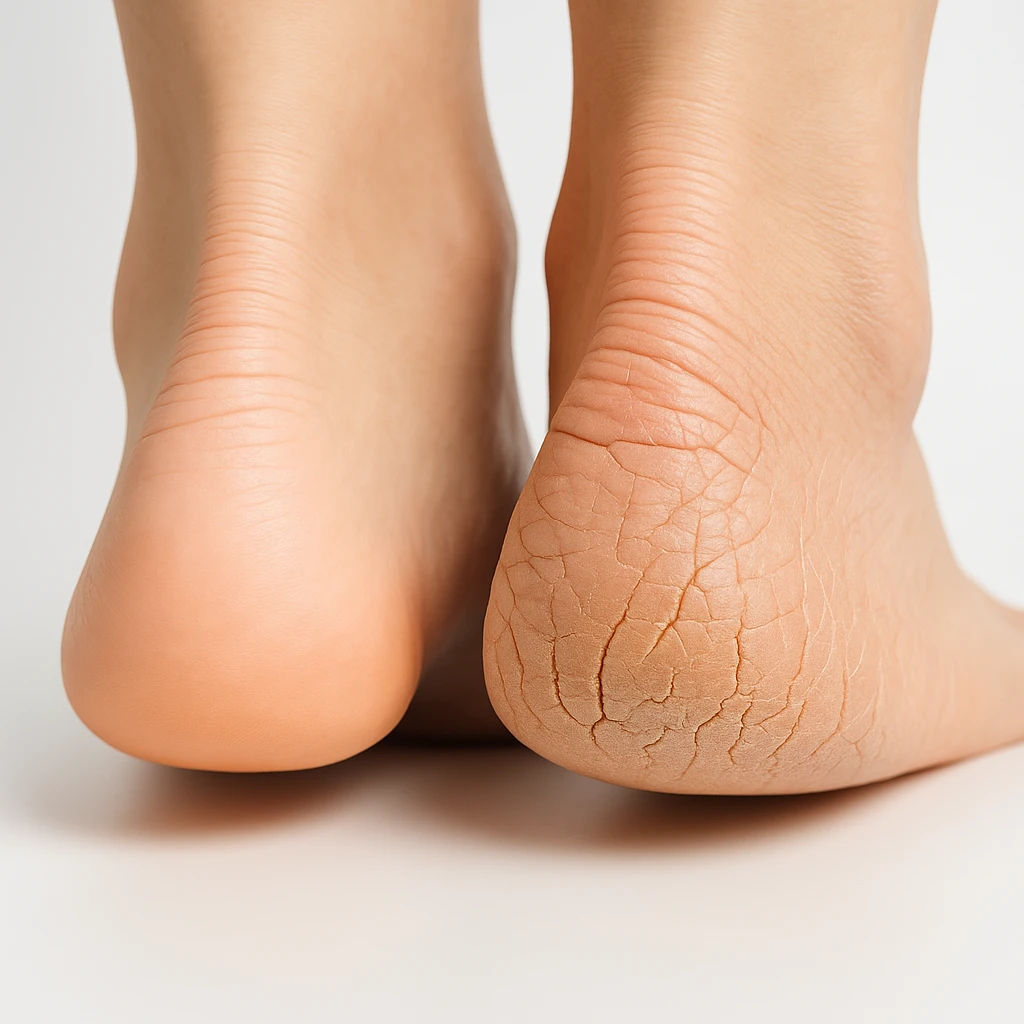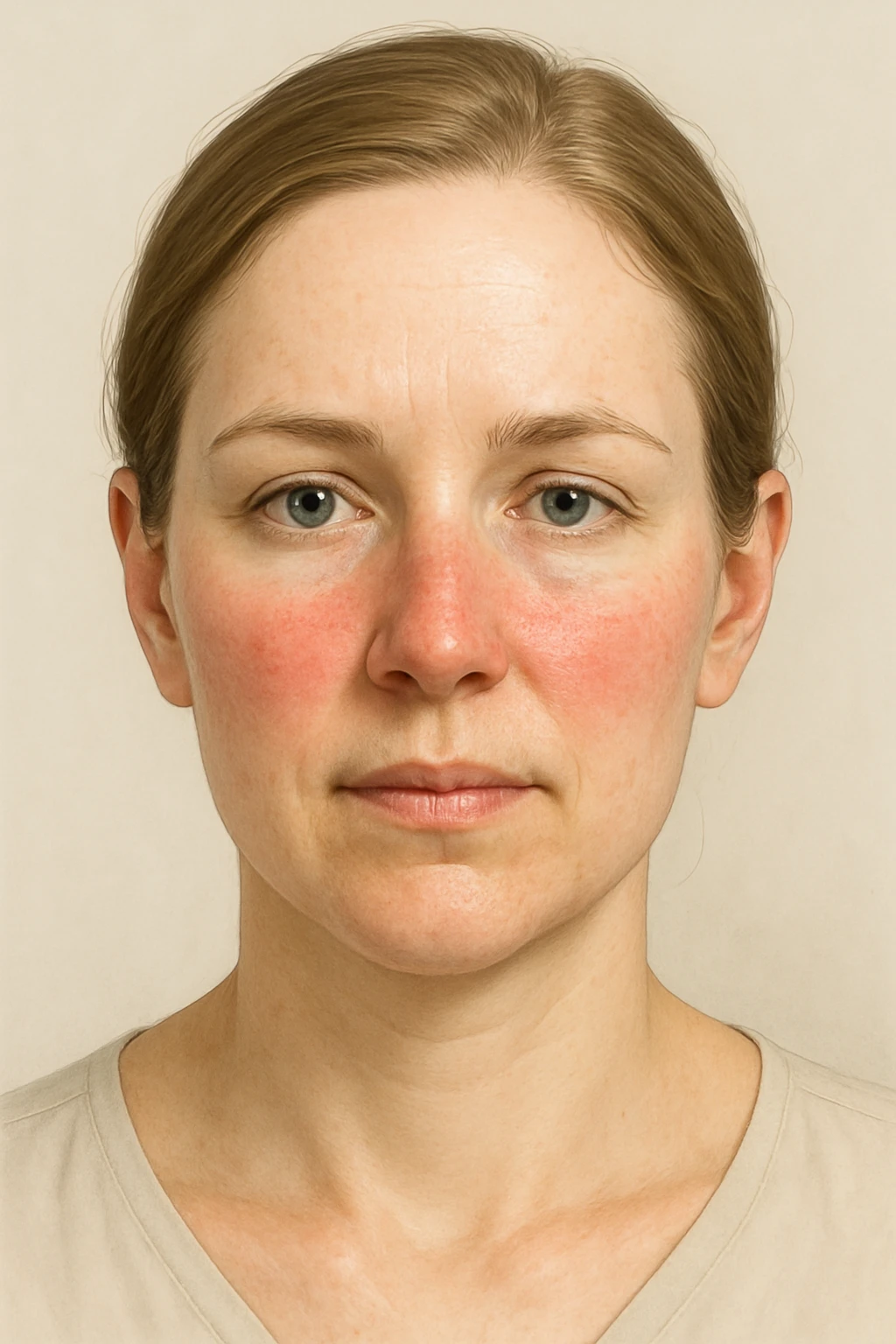What Does a Lung Cancer Skin Rash Look Like?
What Does a Lung Cancer Skin Rash Look Like? Understanding Signs, Causes, and Misdiagnosis
- How Lung Cancer Can Affect the Skin
- Recognizing the Appearance of a Cancer-Related Skin Rash
- Types of Skin Manifestations in Lung Cancer
- Key Differences Between a Cancer Rash and Skin Conditions
- The Timeline of Rash Development in Lung Cancer
- When to Suspect a Rash Might Be Cancerous
- Lung Cancer Types More Likely to Cause Skin Changes
- Diagnostic Process: Imaging, Biopsies, and More
- How Doctors Differentiate Between Benign and Cancer-Related Rashes
- Treatment Options If Rash Is Due to Lung Cancer
- Prognosis and Rash as a Late-Stage Sign
- Differences Between Primary Skin Cancer and Metastatic Lung Cancer Rash
- Importance of Multidisciplinary Teams in Diagnosis
- Preventing Misdiagnosis of Lung Cancer Rashes
- Living with a Skin Rash from Lung Cancer
- Summary: When a Rash Warrants a Cancer Evaluation
- 15+ Frequently Asked Questions
How Lung Cancer Can Affect the Skin
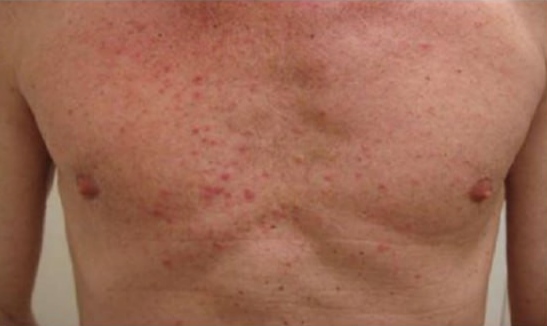
Lung cancer is primarily a disease of the lungs, but in some cases, it can manifest symptoms far beyond the chest. One of the lesser-known but clinically significant signs includes changes in the skin. These changes may present as rashes, lesions, or even lumps that may initially seem unrelated. The mechanisms include direct spread of cancer cells to the skin (cutaneous metastasis), immune-mediated responses, and paraneoplastic syndromes.
When lung cancer cells migrate through the bloodstream or lymphatic system, they can lodge in the skin and begin to grow, mimicking other dermatological conditions. These rashes are typically painless at first but can become ulcerated, itchy, or discolored as the cancer progresses.
Recognizing the Appearance of a Cancer-Related Skin Rash
A skin rash caused by lung cancer doesn’t look like a typical allergic or infectious rash. Instead, it often presents in the form of nodules, plaques, or red-to-purple spots. These may develop suddenly or evolve from existing blemishes. Common locations include the chest, abdomen, scalp, and back.
Below is a comparative table showing differences between common rashes and those potentially linked to lung cancer:
| Feature | Typical Rash (Allergic/Infectious) | Lung Cancer Skin Rash |
| Onset | Rapid (within hours/days) | Gradual or delayed |
| Itching | Very common | Variable, often absent |
| Location | Face, arms, legs | Chest, scalp, back, abdomen |
| Appearance | Even, red, inflamed areas | Nodular, thickened, firm areas |
| Healing | Resolves with treatment | Persistent or worsens over time |
Types of Skin Manifestations in Lung Cancer
Lung cancer can result in a wide variety of skin conditions, depending on whether the reaction is due to metastasis, immune response, or systemic changes. Here are the primary dermatologic presentations:
Cutaneous Metastasis:
This occurs when cancer cells directly invade the skin. Lesions may appear flesh-colored, red, or purple and may resemble cysts or boils. These are usually firm and non-mobile.
Paraneoplastic Dermatoses:
This immune-mediated skin change often occurs as a systemic reaction to cancer. A classic example includes acanthosis nigricans—dark, velvety patches typically in skin folds.
Dermatomyositis-like Rash:
In rare cases, patients develop rashes around the eyelids (heliotrope rash) or knuckles (Gottron’s papules), resembling autoimmune skin conditions.
These rashes can be misleading and may delay cancer diagnosis. The presence of other symptoms like chronic cough, fatigue, or unintentional weight loss helps connect the dermatologic sign to its underlying cause.
Key Differences Between a Cancer Rash and Skin Conditions
Due to its unpredictable nature, a cancer-related rash may mimic a number of non-cancerous conditions like eczema, psoriasis, or fungal infections. This can lead to incorrect self-diagnosis or even misdiagnosis by healthcare providers unfamiliar with oncology dermatology.
A side-by-side infographic (not shown here but recommended for article formatting) might display:
- Psoriasis: Silvery, scaly plaques; symmetrical
- Eczema: Itchy, oozing lesions; responsive to steroids
- Lung Cancer Rash: Nodular, non-responsive, no symmetry
Identifying the key behavioral and morphological patterns is critical. A rash that does not respond to typical dermatological treatment over a period of 4–6 weeks should be evaluated further.
The Timeline of Rash Development in Lung Cancer
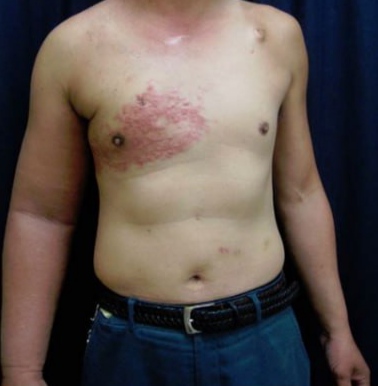
The appearance of a rash associated with lung cancer typically does not occur in the early stages of the disease. Instead, skin changes often manifest when the cancer has already spread beyond the lungs. In some cases, however, these rashes can appear as a first clue before respiratory symptoms become noticeable.
| Stage of Lung Cancer | Likelihood of Rash Appearance | Description |
| Early Stage (I–II) | Rare | Skin typically unaffected |
| Locally Advanced (Stage III) | Occasional | May result from immune-related responses |
| Metastatic (Stage IV) | Common | Direct cutaneous metastases or systemic effects |
This delayed timeline often leads to a misinterpretation of symptoms. A dermatologist unfamiliar with oncologic signs might treat the rash topically without investigating its systemic origin. This is why persistence, location, and resistance to standard treatment are major red flags for further testing.
When to Suspect a Rash Might Be Cancerous
While rashes are common and mostly benign, certain features raise suspicion for malignancy—particularly when associated with internal cancers like lung cancer. Key indicators include:
- Appearance of firm, painless nodules
- Discoloration (purple, red-brown, or violaceous tones)
- Location on the chest wall, abdomen, scalp, or upper back
- Progressive thickening of the skin
- Ulceration or bleeding without apparent trauma
In many cases, these symptoms are missed unless correlated with other complaints like unexplained fatigue or shortness of breath. Any patient with a history of smoking, weight loss, and a non-resolving skin lesion should be referred for imaging studies.
Importantly, metastatic skin nodules can be mistaken for benign lesions such as lipomas or cysts. Biopsy remains the gold standard for confirming diagnosis.
Lung Cancer Types More Likely to Cause Skin Changes
Not all lung cancers are equally likely to affect the skin. Certain histological types have a higher tendency to metastasize to cutaneous sites. Below is a comparative overview:
| Type of Lung Cancer | Likelihood of Skin Involvement | Notes |
| Adenocarcinoma | Moderate | Most common type; can metastasize widely |
| Squamous Cell Carcinoma | Low to moderate | More localized but can spread in late stages |
| Small Cell Lung Cancer (SCLC) | High | Rapid spread; paraneoplastic rashes more common |
| Large Cell Carcinoma | Moderate | Can cause systemic skin symptoms |
These subtypes also correlate with different immune responses, some of which trigger rashes resembling autoimmune conditions. It’s worth noting that small cell lung cancer is particularly aggressive and may cause paraneoplastic dermatoses, which can be mistaken for eczema or lupus.
Diagnostic Process: Imaging, Biopsies, and More
When a persistent or unusual rash prompts concern, diagnostic steps must go beyond visual inspection. The investigative process generally includes:
- Dermatological evaluation: To assess morphology, color, and distribution
- Skin biopsy: Core needle or excisional biopsy to examine for malignant cells
- Imaging tests: A CT scan of the chest can help detect any primary tumors in the lungs
- PET scan: To determine if the cancer has metastasized to distant organs or the skin
- Blood work: Tumor markers or inflammatory markers may support findings
For example, in one documented case, a chest CT revealed a large upper lobe mass in a patient who initially presented only with a red, painless lesion on their back.
In certain cases, dermatologic signs can even lead to the early detection of lung cancer, which otherwise might have progressed silently. This highlights the importance of recognizing seemingly unrelated skin symptoms.
How Doctors Differentiate Between Benign and Cancer-Related Rashes
Distinguishing a benign rash from one related to cancer requires a combination of clinical insight, imaging, and histopathology. General practitioners often start by treating persistent rashes with topical steroids or antibiotics. When there’s no improvement, dermatologists are brought in for further assessment.
Key diagnostic differences:
| Feature | Benign Rash | Cancer-Related Rash |
| Response to treatment | Improves with standard care | Resistant to common topical treatments |
| Onset and duration | Often acute and resolves quickly | Gradual onset, persists for weeks or months |
| Appearance | Red, flaky, itchy | Firm nodules, possibly purple or non-itchy |
| Systemic symptoms | Rare | May include weight loss, cough, fatigue |
| Need for biopsy | Seldom needed | Essential for confirming malignancy |
Another crucial consideration is the location and pattern of the rash. Lesions over the chest wall, shoulders, and scalp are more suspicious in patients with known lung-related symptoms.
Treatment Options If Rash Is Due to Lung Cancer
If confirmed to be metastatic lung cancer, treatment of the rash must be part of the overall cancer management plan. Isolated skin therapies provide little benefit unless the root cause is addressed. Treatment usually involves:
- Systemic chemotherapy – to shrink tumors and reduce skin metastases
- Targeted therapies – effective for lung cancers with EGFR, ALK, or ROS1 mutations
- Radiation therapy – for localized skin nodules
- Immunotherapy – may reduce skin involvement by enhancing immune response
- Palliative care – for comfort in cases where curative treatment is not possible
Here’s a simplified comparison of treatment effectiveness:
| Treatment Type | Works on Primary Tumor | Works on Skin Metastases | Notes |
| Chemotherapy | Yes | Yes | Broad-based approach |
| Targeted Therapy | Yes | Variable | Depends on gene mutations |
| Radiation | Localized | Localized | Best for isolated lesions |
| Immunotherapy | Yes | Yes | May cause immune skin reactions |
Managing symptoms like itching, discomfort, or ulceration also involves supportive treatments like antihistamines, wound dressings, and topical anesthetics.
Prognosis and Rash as a Late-Stage Sign
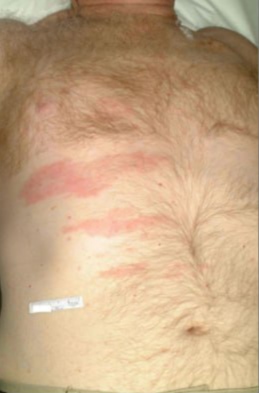
A rash caused by lung cancer often signifies that the disease has spread beyond the lungs. This is typically seen in Stage IV non-small cell lung cancer (NSCLC) or extensive-stage small cell lung cancer (SCLC). As such, its presence is usually a poor prognostic indicator, though outcomes vary depending on cancer subtype and treatment response.
Average survival times once skin metastases appear:
| Cancer Subtype | Average Survival After Rash Onset |
| Small Cell Lung Cancer | 3–6 months |
| Non-Small Cell Lung Cancer | 6–12 months |
| With Targeted Therapies | 12–24 months |
Despite the grim statistics, early detection of a rash as a symptom of underlying cancer can lead to earlier treatment, which may extend life expectancy.
Also, a rash might bring a patient into the healthcare system sooner than they would have otherwise sought care, which can be critical in fast-progressing cancers.
Differences Between Primary Skin Cancer and Metastatic Lung Cancer Rash
It’s essential to understand that a skin lesion can be a primary skin cancer, like melanoma or squamous cell carcinoma, or a metastasis from an internal cancer like lung cancer.
Comparison chart:
| Feature | Primary Skin Cancer | Lung Cancer Skin Metastasis |
| Origin | Begins in skin | Spreads to skin from another organ |
| Common Types | Basal cell, squamous cell, melanoma | Adenocarcinoma, small cell lung cancer |
| Treatment | Surgery, local excision | Systemic cancer treatment |
| Biopsy Result | Skin-origin cells | Lung-origin malignant cells |
| Location | Sun-exposed areas | Chest wall, abdomen, scalp, back |
Dermatopathology can distinguish between the two based on cell morphology and molecular markers.
Importance of Multidisciplinary Teams in Diagnosis
When a skin rash may be linked to lung cancer, an accurate diagnosis often requires coordination across several specialties. General practitioners, oncologists, dermatologists, radiologists, and pathologists form the core of a multidisciplinary team (MDT) that collaboratively evaluates the patient’s full clinical picture.
Here’s how each specialist contributes:
| Specialist | Role in Diagnosis |
| General Practitioner | Identifies unusual rashes and initiates referrals |
| Dermatologist | Performs dermatoscopic exams and conducts skin biopsies |
| Oncologist | Evaluates if the rash corresponds with known or suspected lung cancer |
| Radiologist | Conducts CT or PET scans to detect internal tumors or metastasis |
| Pathologist | Examines biopsy samples to confirm cancer cell origin (skin vs. lung) |
Such teams are particularly critical when symptoms are ambiguous, and a rash could be attributed to non-cancerous conditions like eczema, psoriasis, or drug reactions.
A unified diagnostic approach improves not only the speed of diagnosis but also accuracy, which is essential when skin symptoms may be the first clue to an undiagnosed internal malignancy.
Preventing Misdiagnosis of Lung Cancer Rashes
Because skin rashes are common and usually benign, those caused by cancer are frequently misdiagnosed at first. Misdiagnoses may delay appropriate cancer treatment, with serious consequences. The most frequent initial mislabels include:
- Allergic dermatitis
- Eczema or psoriasis
- Fungal infections
- Drug reactions
Misdiagnosis tends to occur when:
- The patient is young or non-smoker, making lung cancer seem unlikely
- The rash is not painful or does not itch
- The patient lacks other lung cancer symptoms
Below is an infographic summarizing signs that a rash may be cancer-related and should be escalated for further evaluation:
Infographic: When to Suspect a Cancerous Rash
Features like firmness, nodularity, resistance to treatment, and location near the chest/back should prompt further workup.
The inclusion of imaging such as CT scans or even DEXA scans can aid in staging if the skin manifestation turns out to be part of widespread metastatic disease.
Living with a Skin Rash from Lung Cancer
Managing quality of life is just as important as treating the disease. A skin rash can cause physical discomfort, self-consciousness, and emotional distress, especially when lesions are on visible parts of the body such as the neck or arms.
Supportive measures may include:
- Gentle, fragrance-free skin care routines
- Soft, breathable fabrics to reduce irritation
- Cool compresses or prescription topical treatments
- Counseling for emotional support
When skin metastases ulcerate or bleed, palliative wound care becomes necessary. In some cases, specialized cancer centers offer dermatology-oncology clinics that help patients manage both appearance-related and health-related aspects of skin metastases.
Support groups can also help patients cope with the visual and social challenges of cancer-related skin changes.
Summary: When a Rash Warrants a Cancer Evaluation
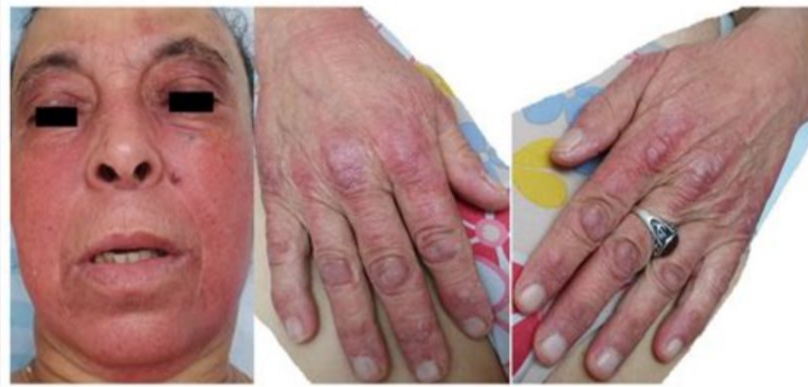
While not all rashes indicate serious disease, some can be the earliest visible indicator of internal malignancy, including lung cancer. Patients should be especially alert when a rash:
- Persists despite treatment
- Appears in unusual locations (back, chest wall, scalp)
- Presents with nodules or firmness
- Is accompanied by systemic symptoms like cough, weight loss, or fatigue
Biopsy remains the gold standard for determining whether a skin lesion is benign, primary skin cancer, or metastatic disease.
Informed patients and coordinated care teams are crucial in reducing delays in cancer diagnosis. If lung cancer is suspected due to unusual skin changes, early referral to oncology can significantly impact treatment outcomes and survival.
15+ Frequently Asked Questions
1. Can a lung cancer rash come and go?
Yes, in rare cases, lung cancer-related rashes may seem to fluctuate, especially if they’re affected by hormonal cycles, immune system responses, or cancer treatment phases. However, most cancer-related skin lesions remain persistent and progressively worsen over time.
2. Is a lung cancer rash always painful?
Not necessarily. Some rashes linked to lung cancer, especially early in skin metastasis, may be completely painless. The lack of pain can contribute to misdiagnosis, as painless lesions are often assumed to be benign.
3. What parts of the body are most commonly affected by lung cancer skin metastases?
Lung cancer skin metastases most commonly appear on the chest wall, abdomen, scalp, and back. These areas have rich blood and lymphatic supply, which may facilitate metastatic spread.
4. Can a rash be the first symptom of lung cancer?
In rare instances, yes. A persistent, unexplained skin rash—especially when resistant to treatment—can precede other respiratory symptoms. This is why dermatological findings should never be ignored when unexplained or unusual.
5. Do different types of lung cancer cause different rashes?
Yes. For instance, small cell lung carcinoma is more likely to cause paraneoplastic syndromes like dermatomyositis, while non-small cell types may lead to localized skin nodules. The rash’s pattern may hint at the cancer subtype.
6. Can skin rash indicate lung cancer recurrence?
Yes. For patients in remission, a new unexplained skin lesion or rash should be investigated promptly. It could be a sign of recurrence, especially if found in unusual areas or if accompanied by fatigue or cough.
7. How is a skin biopsy performed to detect cancer?
A dermatologist or surgeon removes a small portion—or in some cases, the entire suspicious lesion—under local anesthesia. The sample is sent to a pathology lab to determine if it contains malignant cells and whether they originated from the skin or another organ like the lung.
8. Can chemotherapy cause rashes that mimic cancer?
Yes. Many lung cancer treatments, especially EGFR inhibitors and immunotherapies, can cause skin toxicities. These treatment-related rashes can appear similar to cancerous lesions but typically improve with proper skincare or dose adjustments.
9. Are men or women more likely to get skin rashes from lung cancer?
Current research does not show a strong gender bias regarding lung cancer skin metastases. However, hormonal differences may influence how the immune system reacts to malignancy, possibly affecting rash patterns in subtle ways.
10. What’s the difference between a cancerous rash and one from an allergy?
An allergic rash often comes with intense itching, redness, and quick onset, often following exposure to a trigger. A cancerous rash, however, tends to develop gradually, resists standard treatments, and may feel firm, nodular, or deep under the skin.
11. Can imaging like PET or MRI detect a rash’s connection to cancer?
Imaging tools can reveal underlying tumors that coincide with suspicious rashes. PET scans are particularly useful in detecting metastatic spread, including subtle activity in the skin. MRI may be helpful when soft-tissue involvement is suspected.
12. Should I worry about a rash during lung cancer treatment?
It depends. Some rashes are expected as side effects of treatment and may resolve over time. But any new, worsening, or persistent rash should be discussed with your oncology team to rule out skin metastasis or drug-related complications.
13. How do doctors determine if the skin lesion is from lung cancer or a primary skin cancer?
Through pathology. A biopsy is analyzed for markers and cell characteristics. If the cancer cells match lung-origin tumors or express lung-specific proteins, it’s likely a metastasis rather than a new primary skin cancer.
14. Is there a genetic link between lung cancer and certain skin reactions?
Emerging research suggests certain mutations (like in EGFR or KRAS) may not only influence tumor growth but also increase the likelihood of paraneoplastic skin phenomena. Genetic profiling may guide personalized treatment.
15. What skin conditions are often mistaken for cancer-related rashes?
Conditions like rosacea, lupus, contact dermatitis, seborrheic keratoses, and even acne have been confused with early cancer-related rashes. This reinforces the importance of a biopsy for any persistent or suspicious skin change.
